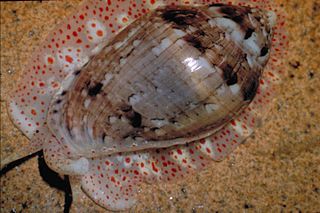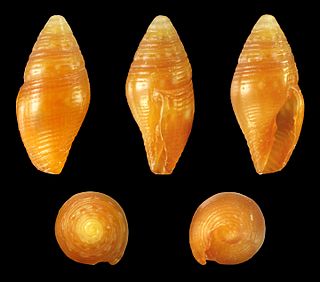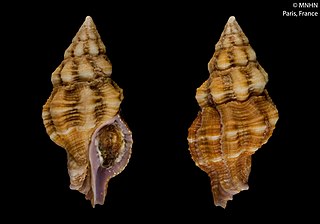Genus is a taxonomic rank used in the biological classification of living and fossil organisms as well as viruses. In the hierarchy of biological classification, genus comes above species and below family. In binomial nomenclature, the genus name forms the first part of the binomial species name for each species within the genus.

Tube-dwelling anemones or ceriantharians look very similar to sea anemones but belong to an entirely different subclass of anthozoans. They are solitary, living buried in soft sediments. Tube anemones live inside and can withdraw into tubes, which are composed of a fibrous material made from secreted mucus and threads of nematocyst-like organelles known as ptychocysts. Within the tubes of these ceriantharians, more than one polyp is present, which is an exceptional trait because species that create tube systems usually contain only one polyp per tube. Ceriantharians were formerly classified in the taxon Ceriantipatharia along with the black corals but have since been moved to their own subclass, Ceriantharia.

Zoanthids are an order of cnidarians commonly found in coral reefs, the deep sea and many other marine environments around the world. These animals come in a variety of different colonizing formations and in numerous colors. They can be found as individual polyps, attached by a fleshy stolon or a mat that can be created from small pieces of sediment, sand and rock. The term "zoanthid" refers to all animals within this order Zoantharia, and should not be confused with "Zoanthus", which is one genus within Zoantharia.

Heterodonta is a taxonomic subclass of saltwater clams, marine bivalve molluscs. This subclass includes the edible clams, the cockles and the Venus clams.

Marginella is a very large genus of small tropical and temperate sea snails, marine gastropod molluscs in the subfamily Marginellinae of the family Marginellidae, the margin snails. It is the type genus of the family.
The World Register of Marine Species (WoRMS) is a taxonomic database that aims to provide an authoritative and comprehensive list of names of marine organisms.

Pleurotomella is a genus of sea snails, marine gastropod mollusks in the family Raphitomidae.

Miltromorpha is a genus of sea snails, marine gastropod mollusks in the family Mitromorphidae, in the superfamily Conoidea the cone snails and their allies. This genus was originally described by Carpenter off the west coast of the United States. The species occur mainly on the continental shelf and in insular environments. Their real diversity is poorly understood.

Latirus is a genus of sea snails, marine gastropod molluscs in the family Fasciolariidae, the spindle snails, the tulip snails and their allies.

Austromitra is a genus of sea snails, marine gastropod mollusks in the family Costellariidae.

Dentimargo is a genus of sea snails, marine gastropod mollusks in the family Marginellidae, the margin snails.

Vokesimurex is a genus of sea snails, marine gastropod mollusks in the family Muricidae, the murex snails or rock snails.

Ancilla, common name the ancillas, is a genus of sea snails, marine gastropod mollusks in the family Ancillariidae.

Alvania is a genus of minute sea snails, marine gastropod mollusks or micromollusks in the family Rissoidae.

Parazoanthidae is a family of cnidarians.

Hawaiian gold coral is a rare, extremely long-lived deep-sea coral found on seamounts near Hawaii. It is the only member of the monotypic genus Kulamanamana. One colony has been dated as 2,740 years old, while others are considered 5,000 years old. Although it has been harvested commercially for use in jewellery for a long time, it was not formally described by taxonomists until 2012 when it was found to be related to both the genus Savalia and the octocoral-associated zoanthid, Corallizoanthus tsukaharai.
Savalia lucifica, commonly known as the luminescent parazoanthid, is a form of false black coral in the family Parazoanthidae. It is known from the Pacific Ocean where it lives at depths of around 700 m (2,297 ft) off the coast of California, but more recently (2011) has been discovered in the Mediterranean Sea at a depth of 270 m (886 ft). This zoanthid exhibits bioluminescence.

Oxudercidae is a family of gobies which consists of four subfamilies which were formerly classified under the family Gobiidae. The family is sometimes called the Gobionellidae, but Oxudercidae has priority. The species in this family have a cosmopolitan distribution in temperate and tropical areas and are found in marine and freshwater environments, typically in inshore, euryhaline areas with silt and sand substrates.

Morum is a genus of sea snails, marine gastropod mollusks in the subfamily Moruminae of the family Harpidae.

Heteropsammia is a genus of apozooxanthellate corals that belong to the family Dendrophylliidae.
















